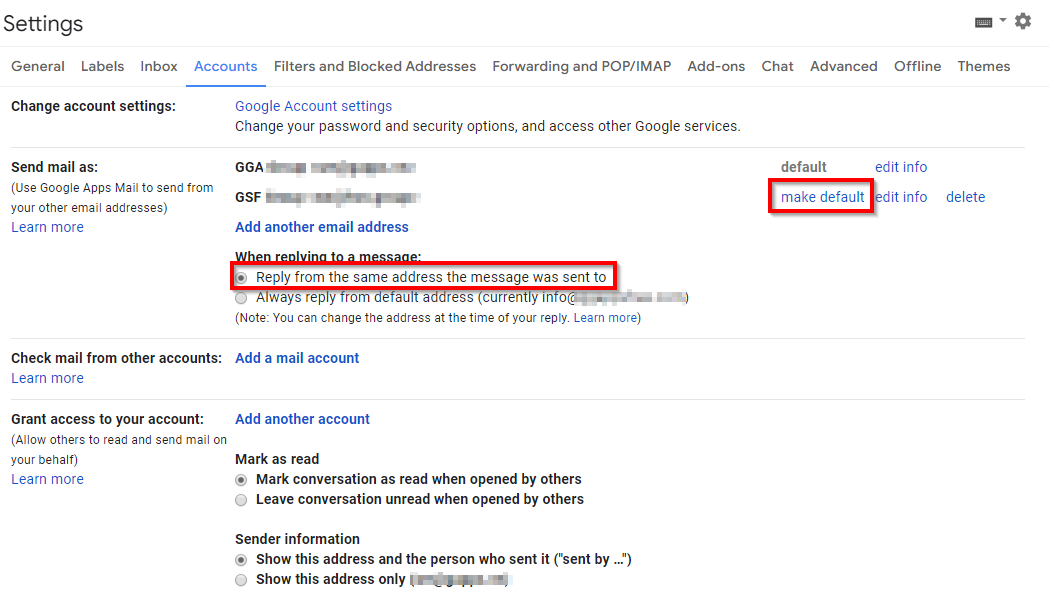

- CREATING A DOMAIN REPLY EMAIL FOR GMAIL HOW TO
- CREATING A DOMAIN REPLY EMAIL FOR GMAIL VERIFICATION
- CREATING A DOMAIN REPLY EMAIL FOR GMAIL CODE
CREATING A DOMAIN REPLY EMAIL FOR GMAIL VERIFICATION
Note: You will ask a verification on the last process. Choose the “Secured connection using TLS(recommended).These are the following details I used during the configuration: To import a domain email address, click the gear icons > Settings > Accounts and Imports > look for send as > Add another email address then follow the wizard instruction to complete the process. Normally, you can only use extension on your Gmail client settings and if you want to in tack all your custom email addresses in one place like Gmail, you need to setup the SMTP. Method 2: Reply as or send as using your custom email addresses in Gmail Then look for email configuration info to see what incoming server, outcoming server and port that you need to use to redirect email addresses to gmail. Let’s say you are using Siteground, just go to Email > Accounts to create a custom email address. To do any auto email forwarding, you need to set your hosting provider email settings. = "Content-type:text/html charset=UTF-8". The content-type header must be set when sending HTML email Here is an example of a basic script to send an email with HTML formatting: The process to send HTML mail is the same, but you need to include an HTML message and additional parameter headers this time. This format is highly customizable compared to plain text messages. PHP mail() function can also be used to send HTML-formatted emails. Otherwise, you’ll receive a notification like: Warning: mail(): "sendmail_from" not set in php.ini or custom "From:" header missing.įor more information about the Sendmail function and its parameters, consult the official PHP documentation. Keep in mind that although additional headers are optional, it’s essential to mention the From header when sending mail. Alternatively, the message below will be displayed. The message above will appear when the script is executed successfully. This line is used to execute the function and check whether it has run successfully. if (mail ($to,$subject,$message,$headers)) This line is commonly used to add additional headers, such as From, Reply-To, and Cc – these extra headers should be separated with a CRLF ( \r\n). Next, go to Security Access and Data Control Less Secure Apps. G Suite allow per-user outbound gateways. Scroll down and enable Allow per-user outbound gateways. Here, input the body of your email message. If you’re using Google Workspace, you’ll need to follow a few steps first to add aliases within Gmail. $subject = "Checking PHP mail" Įnter the subject line for the email here. If you want to deliver the message to multiple recipients, separate their email addresses with commas. $to = recipient’s email address goes here. Thus, it’s better to use one with your domain name to execute the script successfully. Most hosting providers forbid adding random email addresses here, as they can be used for spoofing. $from = line should contain the sender’s email address. The first two lines above enable error reporting to tell you if the PHP script has failed to execute. To help you understand the PHP mail() function, we’ll go over the components of the PHP script we used in the previous section: ini_set( 'display_errors', 1 ) When you’re done editing, click Save & Close.We’ll describe the script components in more detail in the next subsection.
CREATING A DOMAIN REPLY EMAIL FOR GMAIL CODE
You can use the basic PHP code below, but make sure to change its parameters accordingly. Double click on testmail.php to edit it.Name this new file testmail.php, then hit Create. Double click on the public_html folder and select the New File icon at the top bar.



If you use a hosting server, Sendmail is usually already configured. To use the PHP send mail feature, users hosting their PHP application or site on a local server will need to configure a Sendmail program by changing the php.ini file in their PHP installation folder. The first method to send emails directly from a PHP script is by using the built-in mail() function.
CREATING A DOMAIN REPLY EMAIL FOR GMAIL HOW TO
How to Send Emails Using PHP mail() Function


 0 kommentar(er)
0 kommentar(er)
